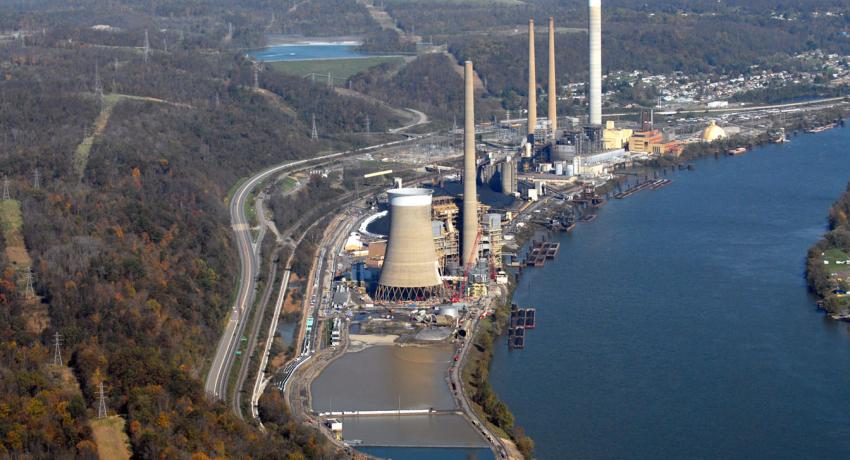Electric cooperative members, and all Ohioans, would be affected as regulations put the nation’s electric system in jeopardy.
COLUMBUS, OH — Today, the Environmental Protection Agency released its long-anticipated final rule targeting emissions from power plants across the country — including the Cardinal Power Plant in Brilliant, Ohio, the backbone of reliable, affordable electricity generation for Ohio’s 1,000,000+ electric cooperative members.
The new EPA rule demands existing coal-fired plants be 90% carbon emission free by 2032 and points to carbon capture technology as a means to achieve it. Generating facilities unable to meet the demands would be forced to close.
“EPA has again proposed an unrealistic and unachievable set of regulations on the production of electricity,” said Pat O’Loughlin, president and CEO of Buckeye Power and Ohio’s Electric Cooperatives. “EPA mandates the use of unproven technologies and sets unrealistic compliance limits on power plants. They have ignored warnings that these rules will increase cost and threaten the reliability of our national electric system at a time when we are experiencing growing demand and already increasing costs Unfortunately, EPA rules will harm electricity consumers and our economy while promising dubious environmental benefit.”
O’Loughlin, along with the leaders of other power generation plants across the country, have testified on Capitol Hill to address the public health and safety risks as well as the negative economic impacts this EPA rule would impose not only on electric cooperative members but on all electricity consumers.
"I don't think anyone at the EPA thought about reliability," said Jim Matheson, President and CEO of the National Rural Electric Cooperative Association. "This is not the appropriate step if we want to secure the future of the electric grid for this country."
"Electricity demand is exploding because of AI data centers, electric vehicles, and new manufacturing facilities. This trend is a welcome indicator of innovation and a growing economy that will strengthen America’s position in the world. At the same time, it means that we need more sources of dependable and affordable electricity such as coal-fired power plants, not fewer," said Michelle Bloodworth, President and CEO of America's Power, a partnership of industries involved in producing electricity from coal. "Already, utilities have announced plans to shut down more than 60,000 megawatts of coal-fired generation over the next five years. These retiring power plants could power either 600 data centers or more than 60 million homes. New EPA rules will accelerate coal retirements."
Duke Energy, which serves about 8.4 million customers, said in a statement that the new power plant rules present “significant challenges to customer reliability and affordability – as well as limits the potential of our ability to be a global leader in chips, artificial intelligence and advanced manufacturing.” In addition, the Edison Electric Institute (EEI), which represents investor-owned utilities, said it appreciated EPA’s work to align compliance deadlines in order to help power companies minimize costs, but has doubts about the timeline for using CCS for compliance. This is the first known time that investor-owned utilities like Duke Energy and EEI have joined in to push back against the EPA's unrealistic standards.
Not only does the new rule threaten both the reliability and affordability of electric power, it puts the integrity of the entire electric grid at risk and all but ensures rolling blackouts will occur during cold winters, when the demand for electricity for heat to stay warm likely will exceed available supply.
Ohio’s Electric Cooperatives has spent more than $1 billion on emission controls at the member-owned Cardinal Plant since 2012, and as a result, the plant has been recognized as one of the cleanest-operating coal plants in the world.
Cardinal Plant supplies more than 70% of Ohio co-op’s electricity generation, relied on by 1,000,000+ people in 77 of Ohio’s 88 counties to power their homes and businesses every hour of every day. Cardinal Plant employs more than 300 people.
About Ohio’s Electric Cooperatives and Buckeye Power
Buckeye Power is a not-for-profit, member-owned generation and transmission (G&T) cooperative supplying electric power and energy to its 25 electric distribution cooperative members for the benefit of their 1 million member-consumers at 400,000 homes and businesses in Ohio. Buckeye member cooperatives’ certified service territory covers nearly 40% of the land area in the state of Ohio and includes portions of 77 of Ohio’s 88 counties. Buckeye Power owns and operates a diverse set of power generation resources, including coal and natural gas power plants, as well as renewable energy projects, including agricultural bio-digesters, landfill gas plants, and 24 solar PV sites. Its energy portfolio also includes a significant entitlement from the New York Power Authority (NYPA) hydropower projects. Buckeye has developed and operates an extensive demand-side management program. www.ohioec.org.
About Cardinal Operating Company
Cardinal Operating Company, the operator of Cardinal Power Plant, is operated by Buckeye Power, a not-for-profit generation and transmission cooperative owned by Ohio’s 25 electric distribution cooperatives. Cardinal Power Plant is situated on the Ohio River in Brilliant, Ohio, about 50 miles west of Pittsburgh and 15 miles north of Wheeling, West Virginia. It has three coal-fired generating units with a total capacity of 1,800 MW. The 25 member-owned electric cooperatives serve 400,000 homes and businesses in 77 of Ohio’s 88 counties, as well as parts of Indiana and Michigan.
Over a decade, and culminating in 2012, Buckeye Power invested $1.2 billion in emissions-control equipment on Units 2 and 3, making Cardinal Power Plant one of the cleanest power plants of its kind in the world. With more than 300 employees, and scores of vendors and contractors supporting them, Cardinal Power Plant is a major economic force in the region.






